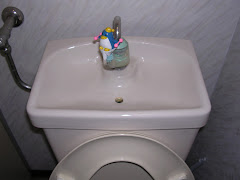2008/09/08
譯自: Seattle Times; Aug. 20, 2008
作者:Karen Kaplan
譯者:陳龍夫
譯自: Seattle Times; Aug. 20, 2008
作者:Karen Kaplan
譯者:陳龍夫
紅血球是血液重要的成份,因為它帶氧。研究人員在科學期刊「血液」(註1)的網頁上發表了一個四步的程序,略述如何將胚胎幹細胞轉變為紅血球,而且其帶氧量不亞於正常的紅血球。
一旦能在實驗室中造血,血庫及醫院就能保證隨時都有足夠的血可用;不論所需的是少見的 AB-陰性,或是可以輸給任何人的 O--陰性的血。同時這還確保病人不致於從人捐的血中感染 C型肝炎或 HIV等疾病;美國明州大學幹細胞研究所(註2)副所長 Dan Kaufman 博士如是說。 Kaufman 本人沒有參與這種研究。
Kaufman 說:「因輸血而感染的病例越來越多,捐血的限制也越來越嚴。 一般談論胚胎幹細胞治療時,常不包括人造血。 我們應該重視它。」
專家們說,在自然環境下負責造血的是所謂的「成人幹細胞」;迄今科學家仍未能有效的控制 成人幹細胞,因此還不能派上實際用場。
這項新的研究能從單一的培養皿的胚胎幹細胞造出一兆個 (1011) 紅血球細胞—足夠裝滿兩三個收集管。
先讓幹細胞自然的進行其早期的發育,然後把它們暴露在各種蛋白質之下,由此促使一些幹細胞轉變為 紅血球細胞。
Advanced Cell Technology 的 Robert Lanza 是這項研究的主要作者。他說如此處理過的幹細胞大約有 65% 成熟到失去細胞核,因此其形狀變成像甜甜圈一樣--正如血管中流動的天然的紅血球。此研究的團隊包括在芝加哥的伊利諾大學 (University of Illinois, Chicago) 和在洛契斯特的梅約診所 (Mayo Clinic in Rochester, Minnesota) 的研究人員。他們造出了 A﹣陽性,A﹣陰性, B﹣陽性,B﹣陰性,和 O﹣陽性的血。
紐約愛因斯坦醫學院 (Albert Einstein College of Medicine in New York) 幹細胞生物學及再生醫學 ( stem-cell biology and regenerative medicine )的教授 Eric Bouhassira 說這個方法的效率比起以往的要好上幾百倍。可惜大多數這樣的紅血球其血球蛋白 (globin) 是胚胎的或是胎兒的血球蛋白。血球蛋白是紅血球中攜帶氧的複合物。輸血病人所需的是成人的血球蛋白。Bouhassira 說,這樣的血是否能用來輸血仍不清楚。 Bouhassira 本人沒有參與這項研究。
Lanza 說科學家正在做進一步的實驗探討如果讓幹細胞在實驗室中有較長的時間去成熟,是否會造出更多成人的血球蛋白。
不過,即使這個方法有了顯著的改進,前途還有一個大難關。
Roger Dodd—美國紅十字會,馬理蘭州 Rockville 市, Holland 實驗室,研發部副總裁--說,在實驗室中造一個單位的血大概要花數千元美金。要用它來取代每年所輸 1400 萬品脫 (譯者注:約 658 萬公升)的血著實太貴了。他接著說:「這是一個艱巨的目標。」
----------------------------------------------------
註 1: The journal “Blood”.註 2: 美國明州大學幹細胞研究所 University of Minnesota's Stem Cell Institute
====================================================
Scientists: Large amount of blood can be "grown"
By Karen Kaplan (Los Angeles Times)
Scientists said Tuesday they have devised a way to grow large quantities of blood in the lab using human embryonic stem cells, potentially making blood drives a relic of the past.
But experts cautioned that although it represented a significant technical advance, the new approach required several key improvements before it could be considered a realistic alternative to donor blood.
Red blood cells are a key component of blood because they carry oxygen.
The researchers outlined a four-step process for turning embryonic stem cells into red blood cells capable of carrying as much oxygen as normal blood. The procedure was published online by the journal Blood.
The ability to make blood in the lab would guarantee that hospitals and blood banks have access to an ample supply of all types of blood, including the rare AB-negative and O-negative, the universal donor.
It also would ensure that patients who get blood are never at risk of contracting diseases such as hepatitis C or HIV, which can be acquired from donor blood, said Dr. Dan Kaufman, associate director of the University of Minnesota's Stem Cell Institute, who wasn't involved in the study.
"People don't usually think about these types of cells when they talk about human embryonic-stem-cell therapy, but it is important," Kaufman said. "There's more infections all the time, and the number of donors is more and more limited."
Researchers have tried to harness the so-called adult stem cells responsible for making blood, but their methods were far too inefficient to be put to practical use, experts said.
In the new study, researchers made up to 100 billion red blood cells — enough to fill two or three collection tubes — from a single plate of embryonic stem cells.
After allowing the stem cells to begin the earliest stages of embryonic development, the researchers prompted some to grow into red blood cells by exposing them to a variety of proteins.
Up to 65 percent of the resulting cells matured to where they shed their nucleus, which allows them to take on the distinctive doughnut shape of circulating red blood cells, said Dr. Robert Lanza, chief scientific officer at Advanced Cell Technology and the study's senior author. The team, which also included researchers from the University of Illinois, Chicago, and the Mayo Clinic in Rochester, Minn., produced blood of types A-positive, A-negative, B-positive, B-negative and O-positive.
The method was 100 times more efficient than previous efforts, said Eric Bouhassira, a professor of stem-cell biology and regenerative medicine at Albert Einstein College of Medicine in New York. But most of the cells had embryonic or fetal versions of globin, the compound in red blood cells that carries oxygen. Only a relative handful appeared to contain the adult globin that would be needed by patients, he said.
"Whether they would be good enough for transfusion is very unclear," said Bouhassira, who was not involved in the research.
Lanza said the researchers are conducting additional experiments to see whether the stem cells will produce more adult globin if given more time to mature in the lab.
Even with substantial improvements, the method faces another big hurdle.
Roger Dodd, vice president of research and development at the American Red Cross' Holland Laboratory in Rockville, Md., said producing blood in the lab could cost thousands of dollars a unit, far too expensive to replace the 14 million pints of red blood cells that are transfused every year.
"It's a rather ambitious goal," he said.
Material from The Associated Press is included in this report.
Copyright © 2008 The Seattle Times Company
Seattle Times; Aug. 20, 2008











No comments:
Post a Comment